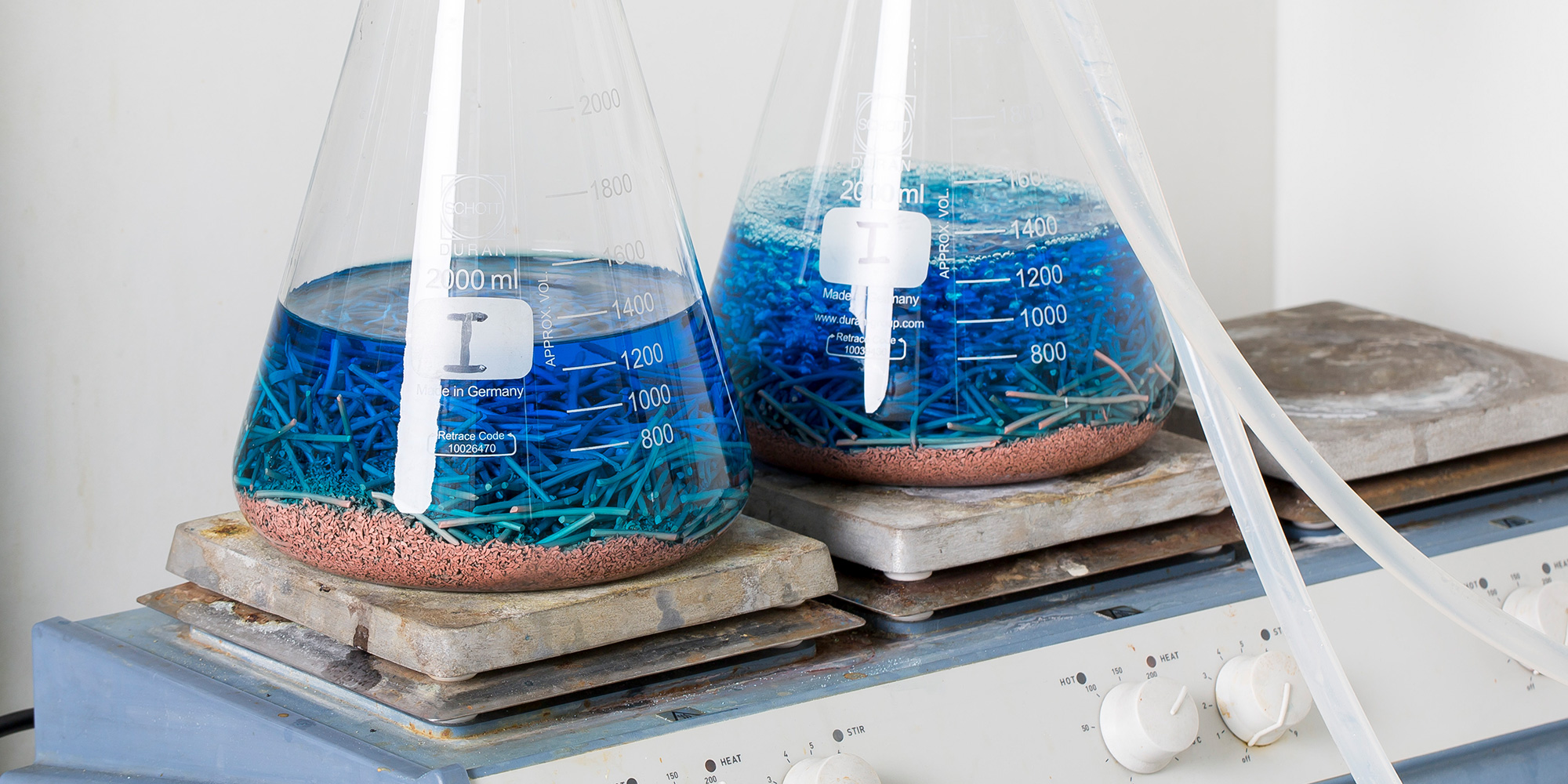DIN 50916 Electrochemical Corrosion Testing in Solutions
The DIN 50916 standard is a critical tool for quality managers, compliance officers, R&D engineers, and procurement professionals working in the oil & gas sector. This test method focuses on electrochemical corrosion testing in solutions, which plays an essential role in ensuring that materials used in this industry can withstand harsh environmental conditions without degradation.
The primary goal of DIN 50916 is to provide a standardized approach for evaluating the resistance of metallic materials to localized corrosion caused by galvanic couples. This type of testing simulates real-world conditions, such as those experienced in oil and gas production facilities where different metals come into contact with each other and corrosive environments.
The test involves immersing two or more specimens of different metals (or alloys) into a solution that mimics the actual service environment. The potential difference between these specimens is measured to determine the galvanic current, which indicates the rate at which one metal will corrode compared to another when in contact with each other.
This method allows for the identification and mitigation of materials prone to localized corrosion. It helps manufacturers select appropriate materials based on their performance under specific conditions, thereby reducing the risk of premature failure or degradation during operations. This is particularly important given the long service life expected from components used in oil & gas facilities.
The electrochemical nature of this test makes it highly sensitive and capable of detecting even minor changes in material composition that could affect corrosion resistance. By employing DIN 50916, organizations can ensure they are using high-quality materials that meet stringent performance requirements.
For instance, if you were testing carbon steel against stainless steel in a brine solution typical of seawater found near offshore platforms, the results would provide valuable insights into which material would be more suitable for certain parts of the structure. Such information is crucial not only for initial design but also during maintenance phases where replacement or repair decisions need to be made.
Additionally, this testing method aids in understanding how different environmental factors—such as temperature, humidity levels, and presence of oxygen—affect corrosion rates. This knowledge enables better planning for protective measures like coatings or cathodic protection systems designed specifically for the targeted environment.
In summary, DIN 50916 provides a robust framework for assessing metallic materials' susceptibility to galvanic corrosion in solutions, offering reliable data that informs material selection and design decisions within the oil & gas industry. Its precision contributes significantly towards enhancing safety standards while minimizing operational costs associated with equipment failures due to improper material choice.
Industry Applications
Offshore Platforms: Testing materials used in platforms exposed to seawater and other corrosive agents.
Subsea Pipelines: Evaluating integrity of pipes carrying hydrocarbons through marine environments.
Pipeline Corrosion Control: Identifying suitable alloys for pipeline interiors that resist internal corrosion from transported fluids.
Onshore Facilities: Assessing equipment and structures used in refineries and processing plants where various metals interact under specific conditions.
Cathodic Protection Systems: Monitoring the effectiveness of these systems which protect buried or submerged structures against rust by providing a more sacrificial anode.
Storage Tanks: Ensuring that tanks storing crude oil or other hydrocarbons are made from durable materials resistant to both chemical and physical stressors present in their surroundings.
Environmental and Sustainability Contributions
The use of DIN 50916 electrochemical corrosion testing contributes positively to environmental sustainability by helping reduce waste and improve resource efficiency. By accurately selecting materials that are resistant to corrosion, industries can extend the lifecycle of equipment and infrastructure without compromising safety or performance.
Extended lifespans mean less frequent replacements, resulting in lower production downtime and reduced environmental impact from manufacturing new products. Furthermore, fewer replacements translate into decreased energy consumption during manufacturing processes such as smelting or forging, thus lowering carbon emissions associated with these operations.
In addition to extending equipment life, DIN 50916 also supports sustainable practices by ensuring that materials used are appropriate for the intended application and environment. This reduces the likelihood of premature failures leading to leaks or spills which could contaminate soil and water sources if not properly managed.
By promoting efficient use of resources through informed material selection, DIN 50916 helps foster a more sustainable approach across various stages of oil & gas operations—from exploration and production to refining and distribution. This aligns with broader goals set forth by international agreements aimed at reducing global carbon footprints and fostering environmentally responsible practices.
Competitive Advantage and Market Impact
The implementation of DIN 50916 electrochemical corrosion testing offers significant competitive advantages in the oil & gas sector. Compliance with this standard demonstrates a commitment to excellence, ensuring that companies meet or exceed regulatory requirements while maintaining high-quality standards.
By adopting advanced testing methodologies like DIN 50916, organizations can differentiate themselves from competitors by offering more reliable products and services. This enhanced reputation builds trust among clients and stakeholders, fostering long-term relationships based on mutual respect and shared values.
The precise nature of DIN 50916 also enables companies to innovate more effectively within their respective markets. Understanding how different materials behave under various conditions allows for the development of new technologies tailored specifically to meet evolving industry needs. For example, advancements in corrosion-resistant alloys or novel protective coatings could lead to breakthroughs that give firms a competitive edge.
In terms of market impact, compliance with DIN 50916 can open doors to lucrative international markets where stringent quality and safety standards are enforced. Governments and regulatory bodies often favor suppliers who demonstrate their commitment to best practices through adherence to recognized standards like DIN 50916.
Moreover, companies that excel in meeting such stringent criteria may find themselves at the forefront of industry trends, influencing future developments in material science and corrosion control techniques. This leadership position can translate into increased market share as well as greater influence over industry standards.





